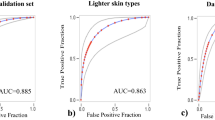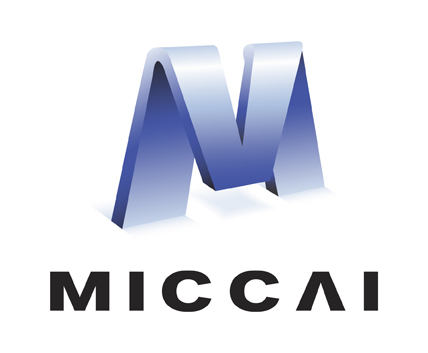Abstract
In the treatment of burn wounds, an accurate estimation of the ratio of the wound’s area to the total body surface area (%TBSA) is crucial. Medical doctors use %TBSA as one of the factors to determine the initial treatment, track the healing process, and devise subsequent treatments. Existing works estimate the %TBSA using generic human models with predefined percentages for each body part. These generic human models do not consider the patients’ actual body shape. Furthermore, the estimation of wound size depends greatly on the doctor’s experience, resulting in inaccurate estimated %TBSA. This work addresses the problem by using 3D modeling techniques and machine learning to give a better estimation of %TBSA for each individual patient. We do this by training a regressor to predict the patient’s body surface area from images of his face and hand, and by using a portable 3D scanner to determine the wound’s area. Our method estimates %TBSA with an average error of 8.5%, which is a huge improvement over the 140% error produced by existing methods. Our method is also easily accessible since it uses commercial-off-the-shelf (COTS) devices. This makes it practical for anyone, even those without medical knowledge, to use. Project page: https://github.com/nganntk/BurnWounds.
This work was done when Han Ching Yong was in NUS.
Access this chapter
Tax calculation will be finalised at checkout
Purchases are for personal use only
Similar content being viewed by others
References
Artec3D: Artec eva. https://www.artec3d.com/portable-3d-scanners/artec-eva
Barnes, J., et al.: The Mersey burns app: evolving a model of validation. Emerg. Med. J. 32(8), 637–641 (2015)
Boyd, E.: The growth of the surface area of the human body. J. Roy. Stat. Soc. 100(1), 111 (1937)
Chauhan, J., Goyal, P.: Convolution neural network for effective burn region segmentation of color images. Burns 47(4), 854–862 (2021)
Coetzee, V., Chen, J., Perrett, D., Stephen, I.: Deciphering faces: quantifiable visual cues to weight. Perception 39(1), 51–61 (2010)
Dantcheva, A., Bremond, F., Bilinski, P.: Show me your face and i will tell you your height, weight and body mass index. In: ICPR, pp. 3555–3560 (2018)
Du Bois, D., Du Bois, E.: A formula to estimate the approximate surface area if height and weight be known. 1916. Nutrition (Burbank, Los Angeles County, Calif.) 5(5), 303–311; discussion 312–313 (1989)
Gehan, E., George, S.: Estimation of human body surface area from height and weight. Cancer Chemother. Rep. 54(4), 225–235 (1970)
Haycock, G., Schwartz, G., Wisotsky, D.: Geometric method for measuring body surface area: a height-weight formula validated in infants, children, and adults. J. Pediatr. 93(1), 62–66 (1978)
Kazhdan, M., Hoppe, H.: Screened poisson surface reconstruction. ACM Trans. Graph. (TOG) 32(3), 29 (2013)
Lund, C., Browder, N.: The estimation of areas of burns. Surg. Gynecol. Obstet. 79, 352–358 (1944)
Lévy, B., Petitjean, S., Ray, N., Maillot, J.: Least Squares Conformal Maps for Automatic Texture Atlas Generation. ACM Trans. Graphics 21(3), 10 (2002)
Mosteller, R.: Simplified calculation of body-surface area. N. Engl. J. Med. 317(17), 1098 (1987)
Parvizi, D., et al.: Burncase 3D software validation study: burn size measurement accuracy and inter-rater reliability. Burns 42(2), 329–335 (2016)
Pham, C., Collier, Z., Gillenwater, J.: Changing the way we think about burn size estimation. J. Burn Care Res. 40(1), 1–11 (2019)
Pham, D., Do, J.H., Ku, B., Lee, H., Kim, H., Kim, J.: Body Mass Index and Facial Cues in Sasang Typology for Young and Elderly Persons. Evid. Based Complement. Altern. Med. 2011, e749209 (2011)
Rueden, C., et al.: Image J2: ImageJ for the next generation of scientific image data. BMC Bioinform. 18(1), 529 (2017)
Sheng, W.B., Zeng, D., Wan, Y., Yao, L., Tang, H.T., Xia, Z.F.: BurnCalc assessment study of computer-aided individual three-dimensional burn area calculation. J. Transl. Med. 12(1), 242 (2014)
Stiles, K.: Emergency management of burns: part 2. https://journals.rcni.com/emergency-nurse/cpd/emergency-management-of-burns-part-2-en.2018.e1815/abs
TG3DS: Digital Fashion Evolution with 3D Fashion Technologies
Verdaasdonk, R., Liberton, N.: The Iphone X as 3D scanner for quantitative photography of faces for diagnosis and treatment follow-up. In: Optics and Biophotonics in Low-Resource Settings V, vol. 10869, pp. 1086902. SPIE (Mar 2019)
Visitrak: Smith and Nephew Healthcare Ltd. VISITRAK Digital. https://www.smith-nephew.com/global/assets/pdf/products/surgical/2-visitrakdigitaluserguide.pdf
Wallace, A.: The exposure treatment of burns. Lancet (London, England) 1(6653), 501–504 (1951)
Wen, L., Guo, G.: A computational approach to body mass index prediction from face images. Image Vis. Comput. 31(5), 392–400 (2013)
Zhang, Z.: A flexible new technique for camera calibration. IEEE Trans. Pattern Anal. Mach. Intell. 22(11), 1330–1334 (2000)
Author information
Authors and Affiliations
Corresponding author
Editor information
Editors and Affiliations
Ethics declarations
Disclosure of Interests
The authors have no competing interests to declare that are relevant to the content of this article.
Rights and permissions
Copyright information
© 2024 The Author(s), under exclusive license to Springer Nature Switzerland AG
About this paper
Cite this paper
Nguyen, KN., Yong, H.C., Sim, T. (2024). Patient-Specific 3D Burn Size Estimation. In: Drechsler, K., Oyarzun Laura, C., Freiman, M., Chen, Y., Wesarg, S., Erdt, M. (eds) Clinical Image-Based Procedures. CLIP 2024. Lecture Notes in Computer Science, vol 15196. Springer, Cham. https://doi.org/10.1007/978-3-031-73083-2_6
Download citation
DOI: https://doi.org/10.1007/978-3-031-73083-2_6
Published:
Publisher Name: Springer, Cham
Print ISBN: 978-3-031-73082-5
Online ISBN: 978-3-031-73083-2
eBook Packages: Computer ScienceComputer Science (R0)





